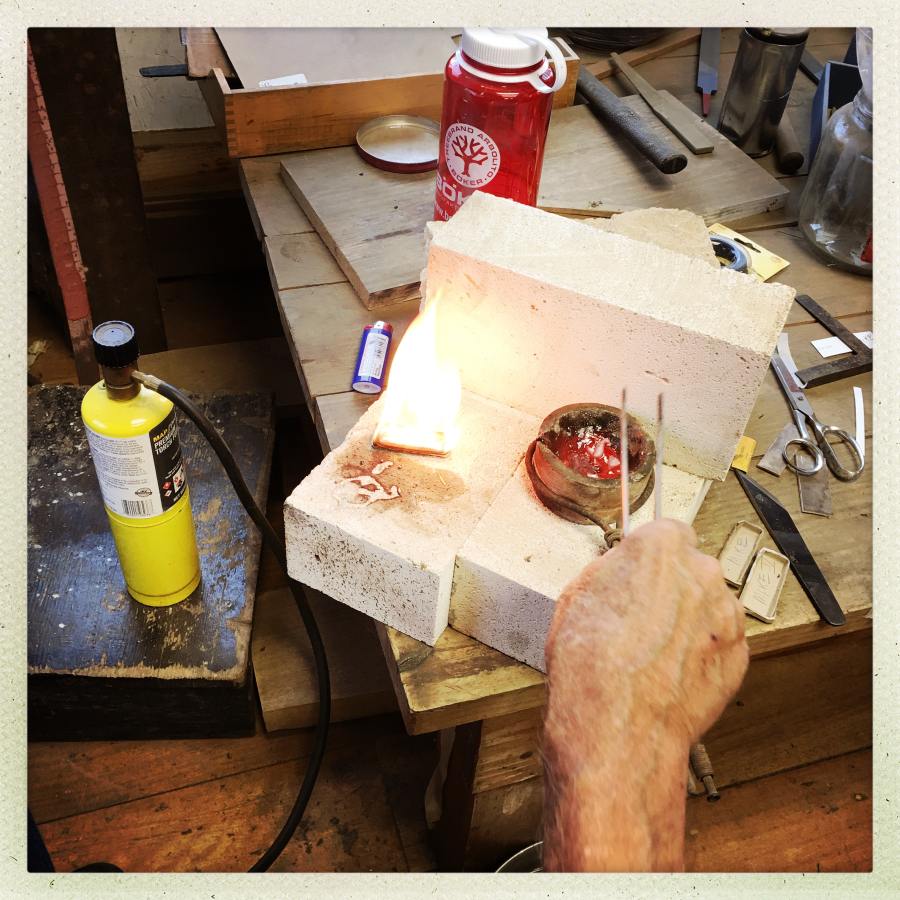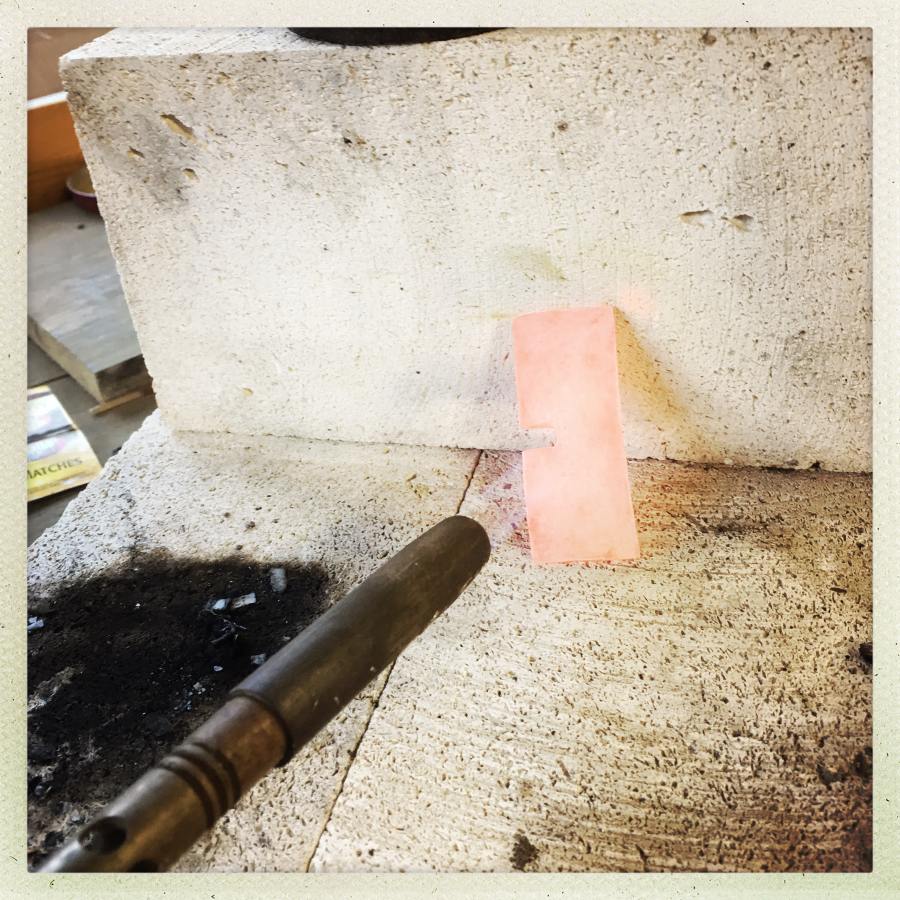Other than “drive over night and get to the airport at 3:00am” the flight out to Portland was uneventful.
Also uneventful (surprisingly) was the security checkpoints’ non-reaction to the variety of steel bars I had in my bag. To be on the safe side, I brought a couple of wrought iron/damascus stacks and my chunk of mokume gane, as well as my embarrassing blade for ‘show and tell.’ Mike swung by the airport in a gigantic pickup truck, and we hit the road. There’s a lot of beautiful country here.
The deal with Mike was simple: he’d cook and do foods and I’d cover the airBNB. That turned out to be a good deal because Mike’s a really good cook: miso soup, rice balls, nori, sous-vide pork chops on the grill, shiitake risotto for breakfast, all the things.

The Tao, Inaction
Yesterday, we got up and went in to Dragonfly Forge then proceeded to do a certain amount of sitting around talking and doing ‘show and tell’ while we figured out what were doing. There’s a split in the work:
- Shape and refine the blades
- Make and fit the habaki

The Habaki is that funny little collar Japanese blades usually have attached at the end of the sharp part of the blade, slipped up over the tang, it seats against a pair of little hips that are ground into the steel. It’s load-spreader, mechanically – everything in the handle and guard stack against it, so the sword doesn’t have to have a great big flat zone for the guard to assemble onto. It also serves to transfer and spread impact energy and to provide a surface for the scabbard to stick onto. It’s a typically Japanese solution to a design problem: carefully fitted, a bit cryptic, and multi-purpose. And it’s another place to show artistry.

The silver is poured
We start alternating between fine-correcting the lines of the tang and forming the habaki. After some discussion we collectively decide that we are going to use sterling silver instead of copper – a harder approach. “Let’s do this the hard way!” The habaki is patterned by wrapping a light piece of cardboard in the appropriate place, and fitted to the unique shape of each blade. Then a small cardboard tray is made which will serve as the mold for the metal – it’s the “lost cardboard” casting technique!
Meanwhile, we also rotate to filing the tang into its best possible shape, and shaping the blade on water stones. It’s good to keep switching between tasks so that we don’t fall into a zombie-state doing them.

The tang in a state approaching “as good as I can get it.”
The cast habaki zygote gets hammered flat and stretched a bit in the necessary dimensions, a process taking about an hour and a half. It’s a lot of pingpingping with a little hammer, and intermittently annealing the metal.
I learn a thing: silver hardens when you hammer it, so it needs to be annealed periodically by heating it up and dropping it in water. With steel, that process would harden it but with silver it softens it. Physicists couldn’t keep their story straight, apparently. “Hey, let’s make this confusing!”

Annealing the silver
The cut notch is going to form the top of the habaki where it seats against the blade.

Today, we’ll be doing more blade-shaping (I will get better pictures) and start forming the habaki.

What does Kajisioshi mean?
chigau@#1:
It means “fine-shaping”
(I fat-fingered it in the title. Fixed now.)
@Marcus, copper behaves the same way – if you want to make it soft, heat it to cherry red and dunk it in water. It will become soft and can be hamered until it hardens.Rinse and repeat.
I’m quite jealous. Please keep the pics and narrative coming.
Nice water bottle. Mine is in the passenger foot-well of my car.
Raucous Indignation@#5:
Nice water bottle. Mine is in the passenger foot-well of my car.
It’s important to stay hydrated! That way I’m like a dog that stops and cocks his leg every 20 steps.